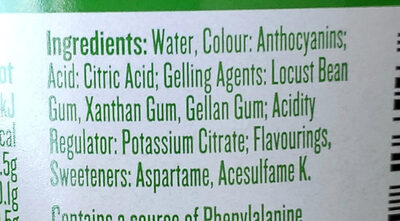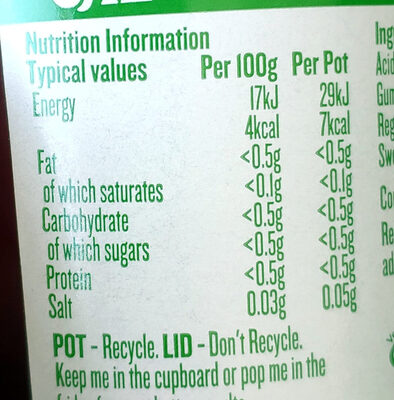10 cal cherry bakewell tart flavour jelly - Hartley's - 175g
This product page is not complete. You can help to complete it by editing it and adding more data from the photos we have, or by taking more photos using the app for Android or iPhone/iPad. Thank you!
×
Barcode: 5060391626543 (EAN / EAN-13)
Common name: Cherry bakewell flavour jelly with sweeteners
Quantity: 175g
Packaging:
Plastic, Pp-polypropylene, Green dot, Plastic pot
Brands: Hartley's
Categories: Desserts, Jelly desserts
Labels, certifications, awards:
Vegetarian, No artificial flavors, Vegan, Contains a source of phenylalanine, Green Dot, No artificial colors, No artificial colours or flavours, Vegetarian Society Approved, Vegetarian Society Approved Vegan, With sweeteners


Link to the product page on the official site of the producer: https://www.hartleysfruit.co.uk/our-rang...
Stores: Asda
Countries where sold: United Kingdom
Matching with your preferences
Report a problem
Data sources
Product added on by openfoodfacts-contributors
Last edit of product page on by packbot.
Product page also edited by alia, kiliweb, off.0270c2d6-ac0a-48c9-9ab5-f3e17da44a20, yuka.sY2b0xO6T85zoF3NwEKvlmZXbYrkkjvnJUbTuX-N39uzKMXpT-hx0pGmDKs.











